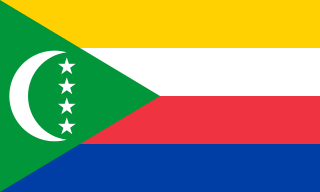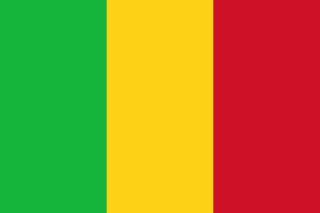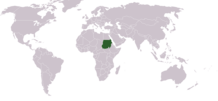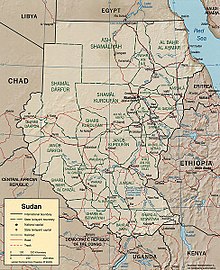
Sudan, officially the Republic of the Sudan, is a country in Northeast Africa. It borders the Central African Republic to the southwest, Chad to the west, Egypt to the north, Eritrea to the northeast, Ethiopia to the southeast, Libya to the northwest, South Sudan to the south, and the Red Sea. It has a population of 45.7 million people as of 2022 and occupies 1,886,068 square kilometres, making it Africa's third-largest country by area and the third-largest by area in the Arab League. It was the largest country by area in Africa and the Arab League until the secession of South Sudan in 2011; since then both titles have been held by Algeria. Its capital city is Khartoum, and its most populous city is Omdurman.

The history of Sudan refers to the territory that today makes up Republic of the Sudan and the state of South Sudan, which became independent in 2011. The territory of Sudan is geographically part of a larger African region, also known by the term "Sudan". The term is derived from Arabic: بلاد السودان bilād as-sūdān, or "land of the black people", and has sometimes been used more widely referring to the Sahel belt of West and Central Africa.

The current flag of Sudan was adopted on 20 May 1970 and consists of a horizontal red-white-black tricolour with a green triangle at the hoist. The flag is based on the Arab Liberation Flag of the Egyptian Revolution of 1952, as are the flags of Egypt, Iraq, Syria, Yemen, and Palestine and formerly of the United Arab Republic, North Yemen, South Yemen, and the Libyan Arab Republic.

Below is a list of the 18 states of the Sudan. Prior to 9 July 2011, the Republic of the Sudan was composed of 25 states. The ten southern states now form part of the independent country of South Sudan. Two additional states were created in 2012 within the Darfur region, and one in 2013 in Kordofan, bringing the total to 18.

The current national emblem of Sudan was adopted in 1985.

The Comprehensive Peace Agreement, also known as the Naivasha Agreement, was an accord signed on 9 January 2005, by the Sudan People's Liberation Movement (SPLM) and the Government of Sudan. The CPA was meant to end the Second Sudanese Civil War, develop democratic governance countrywide, and share oil revenues. It also set a timetable for a Southern Sudanese independence referendum.

The following outline is provided as an overview of and topical guide to the Central African Republic:

The following outline is provided as an overview of and topical guide to Chad:

The following outline is provided as an overview of and topical guide to Comoros:

The following outline is provided as an overview of and topical guide to Egypt:
The following outline is provided as an overview of and topical guide to Libya:

Republic of Malawi – sovereign country located in southeastern Africa. Malawi is bordered by Zambia to the northwest, Tanzania to the north and Mozambique, which surrounds it on the east, south and west and is separated from Malawi by Lake Malawi. The origin of the name Malawi is unclear; it is either derived from that of southern tribes, or from the "glitter of the sun rising across the lake". Malawi is a densely populated country with a democratically-elected, presidential system of government.

The following outline is provided as an overview of and topical guide to Mali:

The following outline is provided as an overview of and topical guide to Mauritania:

The following outline is provided as an overview of and topical guide to Uganda:

Sudan People's Liberation Movement–North, or SPLM–N, is a political party and militant organisation in the Republic of Sudan, based in the states of Blue Nile and South Kordofan. As of 2017, its two factions, SPLM-N (Agar) and SPLM-N (al-Hilu) were engaged in fighting each other and against the government of Sudan.

The Sudanese conflict in South Kordofan and Blue Nile was an armed conflict in the Sudanese southern states of South Kordofan and Blue Nile between the Sudanese Army (SAF) and Sudan People's Liberation Movement-North (SPLM-N), a northern affiliate of the Sudan People's Liberation Movement (SPLM) in South Sudan. After some years of relative calm following the 2005 agreement which ended the second Sudanese civil war between the Sudanese government and SPLM rebels, fighting broke out again in the lead-up to South Sudan independence on 9 July 2011, starting in South Kordofan on 5 June and spreading to the neighboring Blue Nile state in September. SPLM-N, splitting from newly independent SPLM, took up arms against the inclusion of the two southern states in Sudan with no popular consultation and against the lack of democratic elections. The conflict is intertwined with the War in Darfur, since in November 2011 SPLM-N established a loose alliance with Darfuri rebels, called Sudan Revolutionary Front (SRF).
The following lists events that happened during 2011 in Sudan.

The siege of El Obeid was a siege in El-Obeid, North Kordofan, Sudan, during the 2023 Sudan conflict. The battle began on April 15, and saw the Rapid Support Forces (RSF) capture the El Obeid airport from the Sudanese Army contingent in the city. Throughout April and May, the Sudanese Army repelled several RSF assaults on the city, although by May 30, the RSF fully surrounded the city and laid siege to it.






















